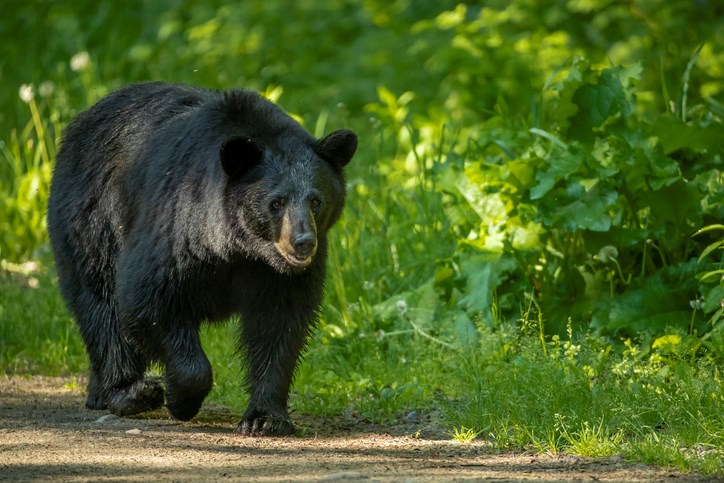Eight bears have had to be destroyed in the Tofino-Ucluelet region so far this year — nearly triple the number from last year — and it could get worse as the bruins prepare for hibernation and become conditioned to easy food sources such as unsecured garbage and chicken coops.
Bob Hansen, co-ordinator with the WildSafeBC Pacific Rim region, said the bears had lost their fear of humans and started relying on pet and livestock food, garden fruits, outdoor freezers, bird feeders, commercial dumpsters — even uncleaned barbecues.
Two of the eight bears destroyed were shot last week after eating garbage from unsecured bins. Hansen said he’s been informed by the Conservation Officer Service that human-bear conflict calls are increasing.
Complicating matters, said Hansen, was a record year for visitors in the region and a summer heat dome that destroyed much of the inland wild berry crop and forced bears closer to the fog zone along the west coast.
“The bear activity increased after that,” said Hansen. “Most of the abundant berry crops are in our communities.”
Increasing human interaction and unsecured food sources can lead to a death sentence for a bear, he said.
The Environment Ministry said conservation officers destroyed 227 bears from April to August across B.C., including 74 black bears in August. Over the April to August period in 2020, 294 black bear were destroyed.
As hibernation draws near, Hansen said, black bears have a natural obsession with gaining weight to survive a near six-month sleep. This “hyperphagia” to store energy as fat is essential for bears to give birth and survive in their dens during hibernation.
They can consume up to 20,000 calories a day over about a month. Hansen said bears are typically on salmon-run streams, in berry patches or eating carcasses.
But if they get a taste for garbage or other easy food sources, bears will start to rely on it.
Vanessa Isnardy, provincial co-ordinator for WildSafeBC, which aims to prevent conflict with wildlife through education, said black bears are awake 20 hours a day and travel the landscape “with a food map in their heads.” She said they typically avoid any human contact.
“If there’s an apple tree on their food map, they will eat from it. But when the fruit wanes, they might look at what else is available — sometimes that’s a garbage can left overnight.”
There are several ways humans can avoid habituating a bear to being fed, such as storing garbage indoors until the morning of pickup, installing electric fencing around chicken coops and greenhouses, cleaning up fallen fruit and trimming back berry bushes.
Hansen said some residents have built heavy wooden sheds to store their garbage, but bears have managed to rip their way in.
“People complain that the garbage smells inside their garage,” he said.
“What I do is sort the smelly stuff and put it in my freezer until garbage day.”
Hansen said euthanized bears are a warning that communities have more work to do.
The retired park ranger and Hitacu-Macoah co-ordinator Marianne Paquette, who works with First Nations and unincorporated areas like Salmon Beach, are educating residents, business and visitors about co-existing with wildlife in areas such as the Pacific Rim.
They go door-to-door, provide workshops, go into classrooms and post messages on social media to educate people about bear-proofing.
WildSafeBC is also working with businesses, towns and municipal areas. The Alberni-Clayoquot Regional District is providing up to $500 for residents to install electric fences around chicken coops. The latest call to conservation officers was on Sunday, when a resident reported a bear at their chicken coop — the ninth report at coops this year
The other major problem is businesses leaving large metal bins unsecured. “Bears will just lift the lid and climb in … it’s a big metal box filled with food,” said Hansen.
Isnardy said work to deter bears from human food sources has to happen at the municipal level, with officials educating residents on what they have to do to protect bears and all wildlife, and backing it up with bylaw enforcement and fines.
She said tranquillizing and relocating bears rarely works.
“It’s not a solution because it doesn’t address the root cause — human behaviour,” Isnardy said.




